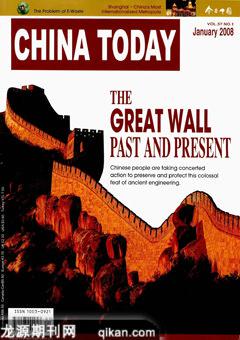Shanghai ——China’s Most Internationalized Metropolis
ZHANG XIWEN
SHANGHAI was a humble fishing village in the 11th century during the Northern Song Dynasty.The area expanded into an agricultural hinterland and cotton and silk industry center during the Ming Dynasty (1368-1644). During this period its trading potential as a deepwater port at the mouth of the Yangtze River was exploited. Shanghai became an international port and center of finance during the latter half of the 19th century. In its heyday, Shanghai was the acknowledged Eastern adventurers paradise. By the 1920s it had become the point of convergence for merchants from France, Britain, Germany and the United States. They set up businesses and built homes, bringing to Shanghai its inimitable ethos of European style, cuisine and culture within a Far Eastern setting. Western businessmen, Chinese magnates and wily compradors lived in sumptuously furnished European-style houses and closed deals in restaurants serving European haute cuisine. Their wives and mistresses, dressed and coiffured in the latest Paris fashion, danced the Charleston and the shimmy in lavishly decorated ballrooms, or went to see the latest Hollywood movie. As Shanghai was one of the first Chinese cities to import automobiles, the greatest number of privately owned cars glided along its heaving streets. It was also the first city in Asia to operate a telephone service.
Fast-paced Shanghai with its bristling skyline continues to be Chinas most dynamic city and a barometer of political and economic change.
The many 19th and 20th century European-style buildings on the Bund, Shanghais most famous landmark, contrast strikingly with the contemporary architecture of Lujiazui on the opposite banks of the Huangpu River. Old-style villas and bars of a distinctly Parisian flavor along leafy Urumqi and Hengshan roads are also counterpoised by the stark New York-style high-rise office blocks near Huangpi Nan Road subway station. The busy roads and sidewalks in the Xujiahui area, meanwhile, typify the downtown areas of Chinas main cities.
Shanghai embodies the multicultural pluralism characteristic of a cosmopolis.

